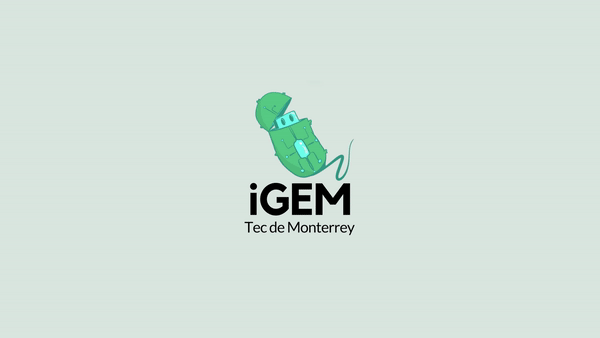| Line 191: | Line 191: | ||
$(document).ready(function () { | $(document).ready(function () { | ||
$(window).scroll(function () { | $(window).scroll(function () { | ||
| − | if ($(this).scrollTop() >= | + | if ($(this).scrollTop() >= 500) { |
var position = $("#sidelist").position(); | var position = $("#sidelist").position(); | ||
if (position == undefined) {} else { | if (position == undefined) {} else { | ||
Revision as of 16:55, 17 October 2018
Collaborations
Ideas Come True
UESTC-China

During the time we designed a flow chart for our CO2 utilization system for application. We were lucky to find our friend, UESTC-China, to work together and end up building a completely eco-friendly system with negative carbon footprint.
We tried to figure out another way in carbon utilization as an contribution of carbon reduction and save energy. However, we face some problem when we tried to apply our Engineering E. coli into industrial scale. Cost evaluation and carbon footprint are big challenges When we were designing the whole CO2 utilization system. We were delighted when we found out someone who will be able to resolve our problems. UESTC-China mainly focused on degrading straw into useful raw materials, including glucose, xylose, ferule acid, and lignin. In addition, they aimed to convert glucose into butanol and hydrogen. As xylose is the main carbon source for our engineered E. coli, we came up with a collaboration idea by integrating our system at the downstream of their system. Xylose is one of the side product produced during straw degradation, it can be extracted and utilized in our system. Concerning the synthesis of xylose may produce greenhouse gas and chemicals, we would like to obtain xylose produced via biological method.

Through UESTC system, xylose will be produced in their fermentation broth as well as other three raw material. In order to calculate the amount of xylose production, they tested the ferulic acid which yield by gas chromatography (GC) after 12 hours. Basically, ferulic acid cover for 1.15% of straw. Then, the enzyme activity of ferulic acid degradation can be calculated. Next, we assume that the rate of xylan decomposition is the same as that of ferulic acid while 30% of xlyan composed of straw. Finally, through derivation, we can get 0.0348 kg xylose from 1 kg straw. The detail progress of calculation was listed below.
Sample :20ml, positive control and 0.3g corn straw was added, Abs600 was not certain because we had added straw.
Ferulic acid by GC : 0.53 mg / L
Ferulic acid in straw:0.3g * 1.15% = 0.345 mg
Ferulic acid degradation rate:(0.53 * 20*10^-3)/0.345 = 10.6%
Xylose in 1kg straw : 1kg * 30% * 10.6% = 0.0348 kg
With NCKU system, E. coli consumed xylose to uptake CO2. The xylose consumption was 23.864 kg to uptake 1kg of CO2. In conclusion, every 685 kg straw can be used to capture 1 kg CO2. In other words, capturing 1% annual CO2 emission of small and medium enterprise, which is 20 tons CO2 require 16 tons straw.
Straw was a biowaste in agriculture while it wasn't easy to decompose. UESTC-China solved this problem with synthetic biology successfully. Through our collaboration, they can not only produce bioenergy, but have another powerful application in CO2 emission problem. NCKU-Tainan provided them a valuable and also applicable way and helped them design a draft of device. The xylose source from straw was really important to E. coli CO2 utilization system which changed the positive carbon footprint into negative carbon footprint. CO2 emission problems is a big issue in the world. The main solution can be separated into two part, CO2 downstream processing and Alternative Energy. Both NCKU-Tainan and UESTC-China contribute to this serious issue and our collaboration could solve both the energy problem and environment problem.
Tec-Monterrey

We have a video meeting with Tec-Monterrey. After introducing our project to them, they had pointed out some aspects that we need to consider. They reminded us to think about our end product which can make our project more complete.
During the meeting, we came up with the idea to collaborate with each other. Their project has two parts. The main part is E-coding, which use E. coli to store data. Another part is to sense the pollutant in river of Mexico, which is the part that we could link our work. We had constructed a pH sensing biobrick which express fluorescence under low pH condition, they suggest us to incorporate our pH sensing construct in their pollutant sensing system, making their system become more complete. Therefore, we shared our plasmid map and construction protocol with them, which they can be used to construct the biobrick in the future.
Also, we found out that the new combined sensing system can be applied in our bioreactor as they aim to sense pollutants such as nitrate, phosphate or heavy metals. This will be a useful alert system for our bioreactor since the flue gas may contain pollutants especially heavy metals that are highly toxic to the E. coli.
Through this collaboration, we not only combined two sensing system, expanding its application field, but we also found a more complete sensing system for our device.
